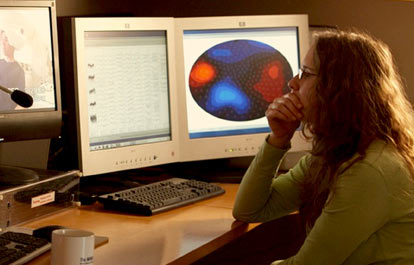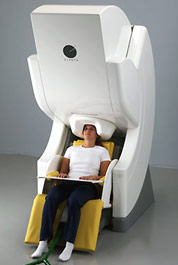

Scientific Lectures //
Towards a Multi-Channel Atomic Magnetometer Array for MEG
Peter D.D. Schwindt PhD. - Photonic Microsystems Technologies Group at Sandia National Labs
Presented: April 29, 2014
ABSTRACT: The primary magnetic sensor used for magnetoencephalography (MEG) is the superconducting quantum interference device (SQUID). Low-Tc SQUIDs must be operated within a liquid helium Dewar, and this cryogenic infrastructure adds significant expense and complexity to QUID-based MEG systems. Additionally, the expense and scarcity of liquid helium is a problem for the on-going operation of SQUID-based MEG systems today. In recent years, atomic magnetometers (AMs) have demonstrated sub-femtotesla sensitivities and have emerged as potential replacements for SQUIDs in MEG applications. Over the past several years our group at Sandia National Laboratories has been developing AMs specifically for the MEG application. In our AM, a pump and probe laser exit an optical fiber and pass through a rubidium vapor cell. The pump laser prepares the atomic state for maximum sensitivity to an external magnetic field and the probe laser reads out the atomic response to the magnetic field. The laser beams sample the magnetic field in four separate regions of the rubidium vapor cell such that each AM sensor module is a 4-channel device. I will present results of MEG measurements taken with a single 4-channel atomic magnetometer, measuring the evoked response from median nerve and auditory stimulation and results taken with two 4-channel atomic magnetometers placed on either side of the head, measuring the auditory evoked response. I will also present our progress toward developing a 36-channel magnetometer array.
To view presentation please click here.

